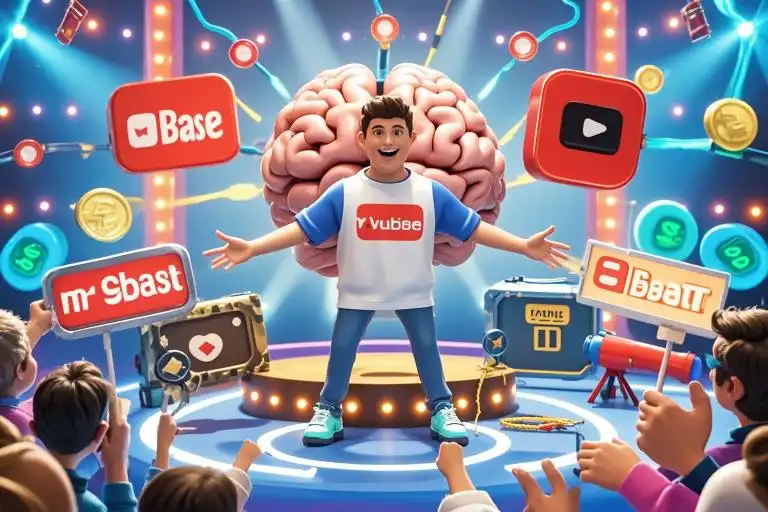A 14-year-old kid films clumsy gaming commentaries in his North Carolina bedroom. Fast-forward a decade, that same teenager – Jimmy Donaldson, now known as MrBeast – casually drops $3 million recreating Netflix’s Squid Game in real life. His channel? Just the second most followed in YouTube history.
“Beginner’s luck,” you might think. But here’s the twist even his diehard fans miss: Those absurd 24-hour challenges and money giveaways? They’re meticulously engineered brain hacks.
The Psychology Playbook Behind the Madness
1. The “Sunk Cost” Sorcery (Why You Can’t Stop Watching)
Remember that video where he spends 53 hours wrapping a friend in duct tape? Or the 7-day buried alive stunt? This isn’t just “content” – it’s neurological warfare.
Our brains have this weird glitch called input bias. The more effort/time we witness someone invest, the more valuable we subconsciously perceive their work. MrBeast weaponizes this by:
- Showing raw behind-the-scenes prep (camera crews measuring exact rubber band counts)
- Displaying real-time timers during challenges
- Highlighting physical consequences (trembling hands after 50 burger bites)
Your brain thinks: “If he suffered through 100 failed attempts to open that ridiculous rubber band safe, the payoff MUST be extraordinary.”
2. The Curiosity Gap (And Why It’s Better Than Clickbait)
Most YouTubers shout “SHOCKING ENDING!” in thumbnails. MrBeast does something sneakier. Watch how he structures titles:
“Last to Leave [IMPOSSIBLE OBSTACLE COURSE] Wins $500,000”
Notice the formula:
- Clear stakes (“$500k”)
- Achievable action (“leave”)
- Deliberately vague middle element (“impossible” how?)
This triggers our need for cognitive closure – the mental itch demanding we see resolutions. It’s why you’ll sit through 15 minutes of tire stacking just to see if the tower collapses.
3. The “You Could Be Here” Effect
When he gives random strangers Lamborghinis, your brain doesn’t think “Rich guy showing off.” Through subtle framing, it becomes:
“This could happen to YOU tomorrow.”
How he creates this illusion:
- Choosing relatable locations (Walmart parking lots vs exotic locales)
- Casting “normal-looking” participants (no influencers)
- Using shaky handheld cameras during surprises to feel spontaneous
Your Turn: How to Cook Up “Brain Crack” Content
Want viewers addicted like they’re binge-watching Netflix? Steal these templates:
The Progress Bar Principle
Next time you film a challenge:
- Start with empty containers/clean spaces
- Show gradual accumulation (pennies added hourly)
- Use visual markers (height charts, percentage counters)
Why it works: Humans are completionists. We’ll watch paint dry if there’s a finish line.
The “Schrödinger’s Payoff” Technique
Tease multiple possible endings without revealing the real one:
“Either I swim across this shark tank… or donate $100k to charity. You pick.”
(Spoiler: He does both, but the dilemma keeps viewers hooked)
The Dark Side of Dopamine Mining
Sure, these tricks work. But here’s what they don’t tell you:
- Overuse causes brain fatigue (see “challenge inflation” where stunts get increasingly dangerous)
- Algorithms reward consistency – can you top last week’s viral hit?
- Authenticity becomes harder as productions scale
The real lesson? MrBeast succeeds not because of the gimmicks, but despite them. At his core, he understands something ancient yet timeless: We don’t just want entertainment. We crave shared human experiences – even if that experience is watching someone eat 15 pounds of cinnamon.
So, what’s your brain-hacking masterpiece? Whether it’s reviewing tech gadgets or teaching origami, remember: Your viewers aren’t just passive consumers. They’re waiting to be neurologically dazzled.



